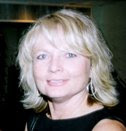The established character scene spotlights Daigo Kobayashi (Masahiro Motoki) playing the cello at his job with a symphony orchestra. While most people highly regard symphony musicians as artists, in reality, many are not truly musicians, but technicians trained to produce their instrument's piece from the notes provided. And so, Daigo lives his life this way, doing what is expected and in the process finds it difficult to handle common human interactions such as telling his wife, Mika (Ryoko Hirosue) that he lost his job and that be bought an exorbitantly expensive cello without telling her, afraid she would say no. His attempt to empathize with a still-moving octopus Mika brings home for dinner proves clumsy and ineffectual when he tries to release the mollusk off an embankment into the river, killing it in the process. It's not until after the couple moves back to Daigo's hometown where he answers an ad thinking it's a tour guide position when in fact it's a pre undertaker "encoffinment" profession, that he discovers and embraces his inner humaneness. It doesn't come out all at once, but evolves through one of Japan's most accomplished directors, Yojiro Takita's deft intertwining of the film's characters and interactions.
It would have been easy to let Daigo's mentor, the Boss (Tsutomo Yamazaki) become the focus of Daigo's metamorphosis, but like a good seasoning, the Boss is used sparingly, effectively and unsentimentally potent yet providing comic relief starting in the opening scene. His staid outer business demeanor gradually melts away, like the winter scenes into the cherry blossom spring, as he attends to and is surrounded by blooming plants and life-affirming dining experiences. Supporting characters, particularly the women, provide the insights and backstories, confirming the Boss' philosophical views that Fate brought Daigo to his destiny as do the families who are portrayed anything but what an outsider might presume a typical Japanese family would be within today's mix of traditional and unconventional situations.
Eventually, Daigo immerses himself into his calling, showing respectful caring for the deceased and becoming the "tour guide" with an uncanny sensitivity for the ones left behind in need for closure. The childhood cello turns his music from formally trained into spiritual delight, playing under a string of small moments throughout the film that interweave personal history into Daigo's transformation ultimately finding "it really isn't what it is". The cello's major role in the film highlights a music score both sumptuous and sadly beautiful as only a cello can do, encompassing themes of rebirth and reconciliation. Very stirring.
Fortunately, the film, distributed by Regent Releasing, has only been out since October 2008 going on to win an Oscar and subsequently 10 Japan Academy Awards including Best Picture, Best Director and Best Actor, the Grand prix des Ameriques at Montreal World Film Festival, Best Feature at palm Springs International Film Festival, Washington DC International Film Festival, Tribeca Film Festival and Los Angeles Asian Pacific Film Festival. It opens in theaters May 29 at Lincoln Plaza Cinema, City Cinema 1, 2, 3 and landmark Sunshine Cinema, 143 East Houston Street, New York, Los Angeles, San francisco and Chicago followed by a national roll out as I most definitely plan to see it again especially staying for the end credits.

